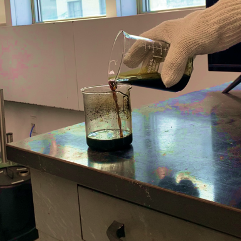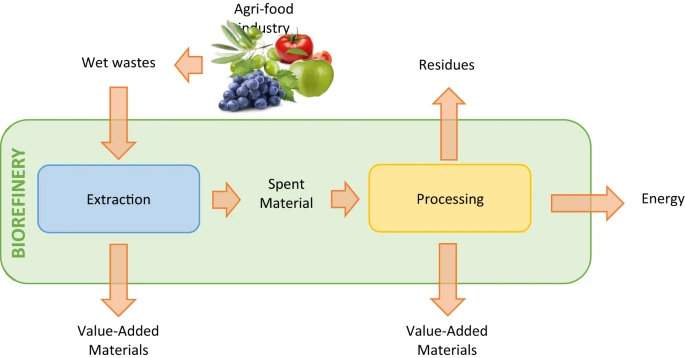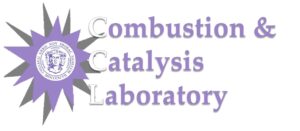Pyrolysis of Waste

Carbon neutral (or negative) fuels obtained from plastics and waste biomass pyrolysis act as alternatives to fossil fuels. CCL is currently working to generate and upgrade pyrolysis oil and waxes, also referred to as renewable/recyclable crude oil (RCO), from a wide variety of waste materials. This research work is in collaboration with industries that are in the forefront of pyrolysis technologies. This research aims to (a.) understand the pyrolysis yields and hydrocarbon spectrum of a wide variety of mixed or segregated feedstock, and (b.) investigate the catalytic upgrading of RCO in fluidized catalytic cracking units. The implications of RCO feed in FCC units are dictated by designing novel catalysts capable of handling a wide range of aliphatic and aromatic hydrocarbons. The FCC unit has been central to refineries for its ability to tolerate variability in feedstock properties for the last 70 years, to generate fuels and chemicals.
Related publications:
- Investigations into the Catalytic Cracking of Pyrolysis Oil Obtained from Plastic Wastes; Snehesh Shivananda Ail, Golam Chowdhury, Marco J. Castaldi, Lucas Dorazio, Jian Shi, James Fu, and C.P. Kelkar; The 27th North American Catalysis Society Meeting, New York, New York; 2022
- Processing renewable and waste-based feedstocks with fluid catalytic cracking: Impact on catalytic performance and considerations for improved catalyst design. Mastry, Melissa Clough, Lucas Dorazio, James C. Fu, Juan Pedro Gómez, Sergio Sedano, Snehesh Shivananda Ail, Marco J. Castaldi, and Bilge Yilmaz. Frontiers in Chemistry 11 (2023): 1067488.
Wet Waste Conversion
The hydrothermal conversion (HTC) process decomposes wet biomass feedstock into a solid fraction (hydrochar), a liquid fraction, and gas (primarily CO2) at temperatures ranging from 180 to 250 ℃ using autogenous pressures. HTC is performed in semi-batch reactors where the feedstock slurry is heated to operating temperatures.

The resulting increase in pressure within the H2O sub-critical region causes the dissociation of water into acidic hydronium ions and basic hydroxide ions, creating a medium for the acid-catalyzed reaction of organic compounds. CCL research activities related to wet waste conversion studies span from lab scale studies to pilot-scale investigations, capable of handling 3 dry tons per day feedstock. The hydrochar thus developed could have an active application in water treatment, soil amendments, solid fuel, and function as absorbents for organic and inorganic contaminants. These initial wet-waste conversion test results were fundamental for the waste producers and waste disposing agencies, who are currently grappling to address disposal-related environmental problems.
Related publications:
- Valorization of wastes from the food production industry: A review towards an integrated agri-food processing biorefinery. Jacopo Paini, Vittoria Benedetti, Snehesh Shivananda Ail, Marco J. Castaldi, Marco Baratieri, and Francesco Patuzzi.
Waste and Biomass Valorization (2021): 1-20. - Operation and Thermodynamic Modeling of a Novel Advanced Hydrothermal Reactor: Introduction of the Novel 3-Step Evolution Model. Stergios Vakalis, Snehesh Shivananda Ail, Konstantinos Moustakas, and Marco J. Castaldi. Energies (2023): 16.
